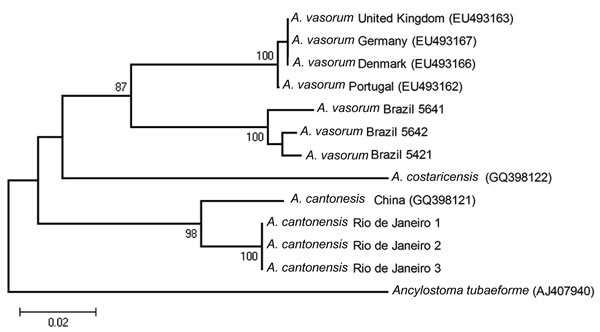Volume 17, Number 7—July 2011
Letter
Endemic Angiostrongyliasis, Rio de Janeiro, Brazil
Figure

Figure. Neighbor-joining phylogenetic tree based on Kimura 2-parameter (K2-p) distances that includes all Angiostrongylus COI sequences in GenBank and the sequences obtained from 3 Angiostrongylus specimens recovered from the pulmonary arteries of a naturally infected Norway rat (Rattus norvegicus) from São Gonçalo, Rio de Janeiro, Brazil, 2010. The specimens yielded 1 haplotype, which clustered together with the A. cantonensis haplotype from the People’s Republic of China with a low genetic distance (K2-p 0.038). Scale bar indicates 0.02 K2-p genetic distance.
Page created: August 18, 2011
Page updated: August 18, 2011
Page reviewed: August 18, 2011
The conclusions, findings, and opinions expressed by authors contributing to this journal do not necessarily reflect the official position of the U.S. Department of Health and Human Services, the Public Health Service, the Centers for Disease Control and Prevention, or the authors' affiliated institutions. Use of trade names is for identification only and does not imply endorsement by any of the groups named above.